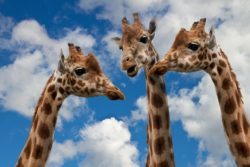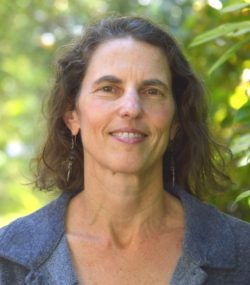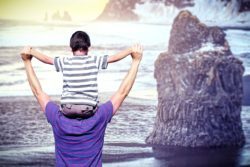Arlene Miller's Blog, page 39
July 27, 2018
Does Anybody Really Know What Time It Is?
. . . Does anybody really care?
How long a minute is, depends on which side of the bathroom door you’re on. ~Zall’s Second Law
Time: abstract noun – 1. indefinite, unlimited duration in which things are considered as happening in the past, present, or future; every moment there has ever been or ever will be. – Webster
As abstract a notion as time is, we do talk about it (a lot) and write about it. In fact, it is the most common noun used in English language conversation. So let’s talk about three time issues we run across in speaking and writing about time
1. This one is pretty easy. We use a.m. and p.m. to denote day and night. It isn’t very difficult to figure out until we get to 12 noon and 12 midnight. Most of us have it figured out, but it can be a little confusing at first. Night would seem to be p.m., but it isn’t. Apparently 12 a.m. begins the morning. And 12 p.m. ends the morning and begins the afternoon. One thing to note when you write (or speak). Saying 8 a.m. in the morning is redundant. Say either 8 a.m. OR 8 in the morning.
2. It is Monday. The teacher tells the class that they are going to have a test next Thursday. Which Thursday is next Thursday? Is it the same as this Thursday or is it the one after that? “Next Thursday” is ambiguous. (Same with next Monday, next Tuesday . . . you get the picture.) It is best to say this coming Thursday . . . or a week from this coming Thursday if that is what you mean.
Time is making fools of us again. ~J.K. Rowling
3. How often does a biweekly magazine come out? How about a semiweekly magazine? What about a bimonthly magazine? Or a semimonthly magazine? This is a confusing one. Let’s look at the two prefixes: bi- and semi-. Bi- means two. Semi- means half. A biweekly magazine comes out every two months. A semiweekly magazine comes out every half month, or twice a month. Are they always used correctly? No. Usually, it seems that biweekly is used for both every other week and twice a week. Likewise, bimonthly means every two months. Semimonthly means twice a month (or biweekly, but let’s not go there!). And, once again, bimonthly is often used to mean either twice a month or every other month. It is best to avoid the ambiguity and just say every two weeks or every other week or every other month or twice a month.
The Future is something which everyone reaches at the rate of sixty minutes an hour, whatever he does, whoever he is. ~C.S. Lewis
—————————————————————————————
Grammar Diva News
Local folks – I will be at the Sonoma County Fair with my books on Saturday, August 4; Sunday, August 5; and Friday, August 10. Come see me and other fabulous Redwood Writers in the Kraft Building from 10:30 to 5:30. Sonoma County Fairgrounds.
We beat the date! To Comma or Not to Comma will now be available on Kindle on August 6. You can still preorder it now for delivery on August 6. The print book will be out sometime in August, as will be e-book for other readers. Take a look at some of the great pre-release reviews:
“An incredible book on punctuation. A great resource for any writer attempting to guide their reader with the proper road signs (punctuation). Loved it!” – Jonas Saul, author of the Sarah Roberts Series
“Arlene Miller’s book To Comma or Not to Comma provides us with an easy-to- read, sometimes humorous, and very valuable handbook for those pesky grammatical and punctuation questions that pop up when writing. Although I’m generally pretty good at navigating the rules, there were many places in reading the book that I was surprised, or grateful, to understand the rule or the reasoning behind it—or I learned something completely new. Thank you, Arlene, for “comma-ing” to our rescue!” – Becky Parker Geist, Owner of Pro Audio Voices (audiobook production), President of Bay Area Independent Publishers Assn
“Arlene Miller’s entertaining and educational book To Comma or Not to Comma will make you your neighborhood’s (and possibly, your entire town’s) Comma Expert. A must for a literate person’s bookshelf!” – Linda Jay, book editor and public relations writer
“There’s no need to be scared anymore about punctuation. In this short book, Arlene Miller tells you what you need to know and makes it easy.” – Andy Ross, literary agent
“From periods and exclamation marks to en dashes and interrobangs, this book explains it all with wit and precision.” – Evelyn Elwell Uyemura, Professor, Humanities Division, El Camino Community College and author of Pronunciation Celebration
“As a writer of historical fiction, I sometimes lose track of the fundamentals of the English language. With English usage constantly changing, it has been essential to have one or more of Arlene Miller’s books on grammar in my arsenal of reference books. To Comma or Not to Comma? The Best Little Punctuation Book Ever! will not disappoint. It is written with precision and humor and will always have a place on my bookshelf. They don’t call Arlene Miller The Grammar Diva for nothing!” – Marilyn Campbell, author of Trains to Concordia and A Train to Nowhere
“An invaluable book for writers at any stage in their careers. It is a thorough and detailed guide about punctuation, done in a clear, concise and fun way. This book will help us write better books, and also blogs, articles, letter, emails and any written communication.” – Brian Jud, author of 14 books (including How to Make Real Money Selling Books), and the Executive Director of the Association of Publishers for Special Sales
“I learned so much from To Comma or Not To Comma. There were rules I THOUGHT I knew, but Arlene showed me that I was doing it all wrong. I was completely messing up elliptical phrases and question marks with quote marks. Thanks to Arlene, I have a new tool to share with my writer community. A great resource.” – Amy Collins, New Shelves Books
July 20, 2018
Can You Twirk? More Fun Facts About Language
Did you know that set has more definitions than any other word in the English language? It has 464! The Oxford English Dictionary‘s full entry of the word set is two times longer than George Orwell’s Animal Farm!
For our past posts on fun facts about words, click here or here.
In 16th century English, twirk meant to “twist the hairs of a mustache.” (But notice the difference in spelling. It isn’t twerk!)
In 18th century English a wobble-shop was a place where beer was sold without a license.
The use of the word selfie increased by 17,000 percent between 2012 and 2013. Can you imagine how much it has increased from 2013 to now?
A dazzle is a group of dragonflies. Makes some sense.
An aurora is a group of polar bears. That, too, makes some sense.
Would you rather drink water than alcohol? If so, you are an aquabib.
In Tudor English ducks were nicknamed arsefeet because their legs are so far back on their bodies.
If you are carrying on a conversation with whispers, you are having a toot-moot.
Do you throw many of the initial drafts of your writing into the wagger-pagger-bagger? (1920’s slang for a wastepaper basket.)
To snirtle is to try to suppress a laugh. We need a snirtle emoticon.
Etymologically, Great Britain means “great land of the tattooed.”
Do you go around and drink the heeltaps at the end of a party?? Hope not. (The remnants of a drink left in the bottom of a glass.)
There are no words for yes and no in Latin. (And apparently no questions that require a yes or no answer!)
The sign language equivalent of a tongue-twister is called a finger-fumbler.
The expression “possession is nine-tenths of the law” was originally “eleven-twelfths of the law,” which is smaller. No one knows why it changed.
Enjoy Hangman? A study (who studies these things?) in 2010 found that the hardest word to guess is jazz. (Unless you guess the letter z!)
Earth is the only planet in our solar system that is not named after a god.
The articles a, and and the do not exist in Russian. (I will refrain from making any further comments about this one.)
—————————————————————————————————
Final Cover! Available on Kindle and other e-readers August 15. Preorder available now. If you are unsure where to put those commas (or apostrophes or ellipses or quotation marks or . . . ), you will like this book! Prefer paperback? Available in August.
Please come on down to the Sonoma County Fair if you are in the area (Santa Rosa, CA). Local authors will be selling their books. I will be there on August 4, 5, and 10. 10:30 to 5:30 in the Kraft Building. See you there!
July 12, 2018
Pesky, Perplexing Prepositions
I have been hearing and reading a lot about prepositions lately, so I thought I would do a post about those pesky words—one of the most challenging parts of the  English language to learn if you are not a native speaker.
English language to learn if you are not a native speaker.
When I sometimes ask a question in a grammar class whose answer is “preposition,” I often get these answers instead:
pronoun
proposition
proverb
A pronoun is a part of speech, like a preposition, but different. Pronouns stand in for nouns, e.g., his, I, me, we, they.
Proverbs are wise sayings, generally from the distant past.
Propositions—well, you know what those are!
A preposition is a part of speech that, I have read lately, really has no meaning. True. Often prepositions don’t have much meaning on their own because they don’t ever appear on their own. They generally appear in what we call a prepositional phrase, which has a specific format: 1) preposition, 2) usually an article, 3) noun or pronoun. For example, in the house, out the door, up the stairs, down the street, by the river, along the beach, under the table, over the moon.
If they are not in a prepositional phrase, pronouns can be found after a verb, in many cases becoming an actual part of the verb, for example, strike out, go inside, mess up, etc. In such cases, the preposition is actually functioning as an adverb, but let’s not worry about that.
So what is so weird and perplexing about prepositions?
Is there any difference between burning up and burning down?
We sit in a chair, but we sit on a sofa. Why? If a chair has no comfy armrests, do we then sit on the chair?
We sit in a car, but we sit on a bus. Do we sit in a plane or on a plane?
We are at the mall, but we are not at the school; we are at school.
We can turn the car in to the garage, but you probably wouldn’t want to turn the car into the garage. (unless you have a magic wand).
You turn in at night when you are tired. And you turn in your math exam. But you turn out at a protest march.
You can take up knitting, but you take down an opponent.
You can bring up a topic, but you bring down a foe.
You can tune in to a radio station, and then you can tune out what your friend is saying.
You can let out your emotions, and let go of your anger.
You can have a walk-in closet and a walk-out basement. Doesn’t anyone want to walk out of the closet or walk into the basement?
You can make up a story, but when you put the two words together, you put it on your face.
Sometimes people put a verb and preposition (adverb) together when they should be separate:
You take off your makeup. But when you put the words together, you have a noun: Are you ready for takeoff?
Similarly, you can set up for the party. Then, everyone else can enjoy the setup of the tables.
You can sign up to volunteer. You can sign in to your computer. I can sign out of this blog post. This is a signoff. 
July 8, 2018
More Mispronounced Words: Part 4 – S Through Z
 This post wraps up our series on commonly mispronounced words. See the other posts in the series: Part 1 , Part 2, and Part 3.
This post wraps up our series on commonly mispronounced words. See the other posts in the series: Part 1 , Part 2, and Part 3.
Commonly mispronounced words: S through Z (actually U)
Salmon — The L is silent.
Salon — Not the same as saloon; and the second syllable is accented—it’s French.
Sherbet — Has only one R. It isn’t sherbert.
Silicon — Not to be pronounced like silicone. Even more like sili-cn, rather than silikon.
Status — I did not know this, but the preferred pronunciation is with a long A: stay-tus.
Suite — Pronounced sweet, not suit.
Supremacist — It is not supremist.
Supposedly — It is not supposably, even if that rolls off the tongue more easily.
Tenet — Not the same as tenant. Tenet is a law or rule; tenant—well, you know what that is.
Take for Granted — Don’t get sloppy (I know you wouldn’t) and say take for granite.
Transient — Has only two syllables, not three. Tran-junt.
Triathlon — Has only one A. Not triathalon.
Undoubtably — It’s undoubtedly.
Come visit me at the Sonoma County Fair! I will be displaying and selling my books with other local authors from Redwood Writers. I will be there from 10:30 to 5:30 on Saturday, August 4; Sunday, August 5; and Friday, August 10. We are in the Kraft Building, Santa Rosa Fairgrounds.
*****************************************************************
Now available for preorder on Kindle (or, if you would prefer, Kobo, iBooks and Nook).
Includes standards for using all the punctuation marks: periods, question marks, exclamation points, quotation marks, italics, semicolons, colons, parentheses, brackets, hyphens, dashes, apostrophes, ellipses, and, of course, commas. Also includes quizzes, an answer key, a glossary of grammar terms used in the book, lots of examples, an index. and a comma quick reference guide.
June 29, 2018
Language Trivia: 25 More Fun Facts
 Word lovers: You are in for some fun.
Word lovers: You are in for some fun.
A few weeks ago I wrote the post A Dozen Fun Facts About Words and the Language. A few months ago I wrote a post called 20 Interesting Facts About the History of Our Language. Continuing in the series of language trivia, here are 25 more fun facts about words and the language:
The most common letter in the English language is e . No surprise there. But did you know that one in eight of all letters written is e ?
The most common consonant in English is r , followed by t .
The most common first letter of a word is s .
Maine is the only state whose name consists of only one syllable.
The longest word in the English language that has its letters in alphabetical order is almost .
Bookkeeper and bookkeeping are the only two words with three consecutive double letters.
The longest word that doesn’t repeat any of its letters is uncopyrightable.
The word like is actually called a “crutch,” along with basically and actually .
Erwth , a musical instrument once played in Europe, is the longest word without a vowel. (assuming y is not a vowel — rhythm ).
Strengths is the longest word with only one vowel.
On average, for every letter q written in the English language, there will be 56 e ‘s.
The compulsive desire to look at something that horrifies you, such as a horror movie or an injury, is called cacospectomania .
To jakes is to walk mud into a house.
An autohagiograph y is an autobiography that makes the subject appear better than they actually are.
Use of the word selfie increased by 17,000% between 2012 and 2013.
An aquabib is someone who chooses to drink water rather than alcohol.
Callomaniacs are people who think they are more beautiful than they really are. (Are shallowmaniacs the only ones who care?)
We know that a soliloquy is a solo speech. The proper name for speaking through clenched teeth is dentiloquy .
The head of an asparagus is called the squib .
GIF stands for “graphics interchange format,” and, according to its inventor, should be pronounced “jiff” and not “giff.”
Referring back to #9, apparently some people don’t consider y a vowel and say that rhythm is the longest word without a vowel. However, I say y is obviously a vowel in rhythm .
Skiing is the only word with a double i . Unless you also count Hawaii !
Queuing is the only word with five vowels in a row.
At the beginning of a game of Scrabble, you have roughly a 1 in 20,000 chance of picking the word senator out of the bag. I would think the same is true of Words with Friends. Anyone know?
Apparently (and I have seen differing opinions on this), some think the longest word in the English language has 189,819 letters. It is the full chemical name of titin , a protein that controls the movement of muscles. I would spell it out here, but I don’t have room

June 22, 2018
Rebel Without a Clause: Letting Go of Grammar Rigidity and Finding My Four Guiding Principles
It is my pleasure to present this guest post by author and editor Audrey Kalman. See her bio following the post.
By Audrey Kalman
If you’re interested in grammar, you may remember the book Eats Shoots & Leaves. Or you may have heard the phrase “let’s eat Grandma” followed by the admonition that “commas save lives!” Both serve as examples of the necessity of commas to convey meaning. Grammar—or, more specifically, its misuse—can have real consequences.
This may be one reason why some people get so exercised over grammatical errors. I know, because I used to be one of them. I still enjoy a good tussle over use of the Oxford comma. However, as a lifelong writer, my views on grammar have evolved.
I was appropriately rigid as a young writer because everyone told me I had to learn the rules before I could break them. I rebelled in early adulthood, thinking—if not always saying—who are you to tell me I have to follow the rules?
Now I’ve settled into a more harmonious relationship with grammar and wordsmithing. I’m less afraid to push the boundaries or break the rules in service of a greater good, such as maintaining the voice of a character or supporting the style of a piece. When I feel uncertain about usage or sentence structure, I consult experts such as The Chicago Manual of Style, The AP Style Guide, or Arlene Miller.
In general, I leave the grammar rules to the grammarians. But over the years I have come up with a few guiding principles for writers of any kind—whether novelists, memoirists, or casual emailers.
1) Be humble. Be prepared to question yourself and listen to what others say about your writing—grammar and style included. This is not the same as blindly accepting criticism. On a grammatical issue, if someone says you’re wrong and you believe you’re right, go to a neutral third party for arbitration. If the criticism involves a matter of personal taste rather than something that can be resolved by objective analysis, then follow your heart and your voice. For example, I’ve had my fiction criticized as “wordy.” I listened, reviewed the criticized pieces, and in some cases decided that I was content with them as written. Shakespeare, William Faulkner, and Thomas Wolfe were wordy too. Readers who want Hemingway should read Hemingway, not criticize non-Hemingways for not being Hemingway.
2) Be yourself. Too many people try to make themselves sound the way they think they ought to sound. In the process, they end up sounding stilted, artificial, and often simply unreadable. One of the hardest things to do is find your voice as a writer, which you won’t do by making yourself sound like someone else.
3) Read and imitate. Wait—didn’t I just say you can’t find your voice by imitation? True. You can, however, learn to write well by imitating. I didn’t learn to write by taking a class. I learned by plagiarizing my favorite childhood novels. Eventually I stopped imitating other writers and started becoming confident in the way I wrote. Similarly, I didn’t learn grammar by diagramming sentences, but rather by reading lots and lots of well-written sentences. The one drawback to this method—which I think of as “natural grammar acquisition”—is that even now, as a professional editor, I sometimes have no idea why something is right. Then I scurry to the experts to find the rules supporting my intuitions.
4) Know thy audience. Once upon a time, in my rigid writing days, I would have been horrified by texting and emojis. Even now, I use punctuation and complete words in most of my texts, which makes my kids laugh. Still, I appreciate the evolution of language. Language is living and it should be joyful. Of course, that doesn’t mean using emojis in journal articles or LOLing in term papers. Thus the dictum know your audience. As with all social constructs, you’ll do better if you know the basic rules of grammar and style and understand where, when, and how it’s appropriate to break them.
So there you have my four principles. Take ‘em or leave ‘em. Follow ‘em or break ‘em. The one thing I can promise if you decide to break them is that the consequences won’t be as dire as cannibalism perpetrated against your relatives.
Bio
 Audrey Kalman writes literary fiction with a dark edge, often about what goes awry when human connection is missing from our lives. She is the author of two novels—What Remains Unsaid and Dance of Souls—and a forthcoming book of short stories, all available on Amazon. Her short fiction and poetry have appeared in a number of print and online journals, and she is at work on another novel. Connect on Twitter, Facebook, or via her website.
Audrey Kalman writes literary fiction with a dark edge, often about what goes awry when human connection is missing from our lives. She is the author of two novels—What Remains Unsaid and Dance of Souls—and a forthcoming book of short stories, all available on Amazon. Her short fiction and poetry have appeared in a number of print and online journals, and she is at work on another novel. Connect on Twitter, Facebook, or via her website.
Grammar Diva News
(Temporary cover only)
My new book, To Comma or Not To Comma will be out later this summer (I am hoping August). It will likely be available for preorder on Kindle.
Spoke to a class of would-be entrepreneurs in their teens at the SBDC (Small Business Development Center) Boot Camp about the importance of good writing skills for anyone who wants to start a business. I will be speaking to another such group this coming week at College of Marin.
June 14, 2018
A Tribute: Fathers and Father’s Day
There are more than 70 million fathers in the United States, and Sunday, June 17 is their day this year: the third Sunday in June. Economists estimate that  Americans spend more than $1 billion each year on Father’s Day gifts.
Americans spend more than $1 billion each year on Father’s Day gifts.
Mother’s Day came into being first. Then, much later on, came Father’s Day. For more information about Mother’s Day, click here. Or here. Or here.
There are two stories of how, why, and when the first Father’s Day was celebrated:
The first Father’s Day was celebrated in Washington state on June 19, 1910. Sonora Smart Dodd, one of six children raised by a widower, was listening to a Mother’s Day sermon at church in 1909 when she thought of the idea of a day to celebrate fathers. She felt mothers were getting all the attention with their special day.
The other story took place in Fairmont, West Virginia, on July 5, 1908 when Grace Golden Clayton suggested to the minister of the local Methodist church that they hold services to celebrate fathers after a deadly mine explosion killed 361 men.
The idea of a Father’s Day did not meet with same enthusiasm as Mother’s Day. As one florist said, “fathers haven’t the same sentimental appeal that mothers have.”
And it did take a while for Father’s Day to come into its own. While Father’s Day was celebrated in communities across the country, it still wasn’t a national celebration.
In 1916, President Wilson marked the day by using telegraph signals in Washington D.C. to unfurl a flag in Spokane.
William Jennings Bryant was one of its staunchest proponents. And in 1924 President Calvin Coolidge recommended that Father’s Day become a national holiday.
But no official action was taken.
In 1966 Lyndon B. Johnson,with an executive order, designated the third Sunday in June as the official day to celebrate Father’s Day. Finally, in 1972, during the Nixon administration, Father’s Day was officially recognized as a national holiday.
Apparently, some men still aren’t down with Father’s Day. As one historian writes, they “scoffed at the holiday’s sentimental attempts to domesticate manliness with flowers and gift-giving . . . often paid for by the father himself.”
During the 1920s a movement arose to combine Mother’s Day and Father’s Day into a single Day, Parent’s Day. But then came the Great Depression, and struggling businesses wanted the sales that both separate holidays could bring them. When World War II started, advertisers argued that Father’s Day was a good way to honor our troops and support the war effort.
In some countries, particularly in Europe and Latin America, fathers are honored on St. Joseph’s Day, a traditional Catholic holiday on March 19.
Here are some other countries’ days for celebrating fathers:
March 19 – Bolivia, Honduras, Italy, Lichtenstein, Portugal, Spain
May 8 – South Korea
Second Sunday in June– Austria, Ecuador, Belgium
Third Sunday in June – Antigua, Bahamas, Bangladesh, Bulgaria, Canada, Chile, Columbia, Costa Rica, Cuba, Cyprus, Czech Republic, France, Greece, Guyana, Hong Kong, India, Ireland, Jamaica, Japan, Malaysia, Malta, Mauritius, Mexico, Netherlands, Pakistan, Panama, Paraguay, Peru, Philippines, Puerto Rico, Saint Vincent, Singapore, Slovakia, South Africa, Sri Lanka, Switzerland, Trinidad, Turkey, United Kingdom, United States, Venezuela, Zimbabwe
June 23 – Nicaragua, Poland, Uganda
Second Sunday in July – Uruguay
Last Sunday in July – Dominican Republic
Second Sunday in August – Brazil
August 8 – Taiwan, China
August 24 – Argentina
First Sunday in September– Australia, New Zealand
New Moon of September – Nepal
First Sunday in October – Luxembourg
Second Sunday in November– Estonia, Finland, Norway, Sweden
December 5 – Thailand
Enjoy these quotes about fathers:
It doesn’t matter who my father was; it matters who I remember he was. Anne Sexton
I wasn’t anything special as a father. But I loved them and they knew it. Sammy Davis, Jr.
Until you have a son of your own… you will never know the joy, the love beyond feeling that resonates in the heart of a father as he looks upon his son. Kent Nerburn
He who does not teach his son his duties is equally guilty with the son who neglects them. Confucius
One father is more than a hundred schoolmasters. George Herbert
Anyone can be a father, but it takes someone special to be a dad, and that’s why I call you dad, because you are so special to me. You taught me the game and you taught me how to play it right. Wade Boggs
Being a father has been, without a doubt, my greatest source of achievement, pride and inspiration. Fatherhood has taught me about unconditional love, reinforced the importance of giving back and taught me how to be a better person. Naveen Jain
It is a wise father that knows his own child. William Shakespeare
I have a Father’s Day every day. Dennis Banks
Thank you so much to the following websites. Check them out for more information!
A Brief History of Father’s Day
Need some summer reading? A grammar book, perhaps? Novel? Self-publishing guide? Check out my book page!
June 7, 2018
The Order of Adjectives
 Adjectives describe, or modify, nouns: big, soft, blue, lovely, horrible, pretty, English, cotton, round, seven . . . all adjectives.
Adjectives describe, or modify, nouns: big, soft, blue, lovely, horrible, pretty, English, cotton, round, seven . . . all adjectives.
Most of the time, we use one adjective to describe a noun:
blue dress
lovely flower
five pencils
young boy
Often, we use two consecutive adjectives to describe a noun:
Beautiful blue dress
lovely pink flower
five yellow pencils
young British boy
Occasionally we use three or more adjectives to describe a noun:
Beautiful new blue dress
lovely tiny pink flower
five big yellow pencils
tall young British boy
(Yes, sometimes you do need commas between some of them! Refer to the blog post about commas with adjectives.)
You probably don’t even notice, but adjectives follow a specific order in speaking and writing. If you put them in a different order, your sentence will sound weird. Native speakers put the adjectives in this order naturally. Here is the order:
quantity or number: three, five, a dozen
quality or opinion: beautiful, terrible, gloomy, crazy
size: big, small, enormous, tiny
age: old, young, five-year-old
shape: oval, triangular, round
color: blue, pink, orange, silver
proper adjective: American, Indian, Japanese
purpose or qualifier (often forms part of the noun itself): writing (pad), shredding (machine).
Some examples:
I have three cups.
I have three beautiful cups.
I have three beautiful tiny cups.
I have three beautiful tiny hundred-year-old cups.
I have three beautiful tiny hundred-year-old round cups.
I have three beautiful tiny hundred-year-old round multi-colored cups.
I have three beautiful tiny hundred-year-old round multi-colored German cups.
I have three beautiful tiny old round multi-colored German drinking cups.
These just don’t sound right:
I have beautiful three cups.
I have three hundred-year-old round tiny cups.
I have three beautiful multicolored German hundred-year-old tiny cups.
So there is one thing in grammar you really don’t even have to think about!
You might be interested in another blog post about adjectives:
Click here to check out my grammar books!
Grammar Diva News
I will be speaking to the Entrepreneur Book Camp for students thinking of starting a business on June 12 and again on June 26. These bootcamps are sponsored by the Small Business Development Center.
Working on my new punctuation book, To Comma or Not to Comma, which should be out in July or August.
Coming attractions: Online courses in grammar and business writing.
May 29, 2018
Weekend Ramble: The Book or the Movie?

 Have you ever read a great book and thought it should be made into a movie? I certainly have.
Have you ever read a great book and thought it should be made into a movie? I certainly have.
Have you ever seen a movie and thought, “Wow, that would make a great book!” I didn’t think so.
You have probably read a book and then seen the movie and said, “The book was way better than the movie.”
However, you probably haven’t said, “Wow, the movie was so much better than the book.” Have you?
So would you rather read the book before seeing a movie? Or see the movie and then read the book? Or read the book and not want to even ruin it by seeing the movie? Or see the movie, and the heck with the book because you don’t read? (I didn’t think that last one applied to most of you.)
I don’t usually remember much about the books I read or the movies I see after I have read or seen them. One of my quirks. However, I can recall two movies that seemed as good—or almost as good—as the book: The Martian and A Man Called Ove. I thought The Martian movie helped explain some of the details I really couldn’t understand in the book. As far as A Man Called Ove—well, the book is great, the movie is great, and if you haven’t seen and read it, you should. I should add to this list The Help, which I thought was a great book and a great movie.
What other movies were as good as—or almost as good as—the book?
One real failure of a movie I remember is One for the Money, based on the fun Janet Evanovich mystery. You probably didn’t see it because I suspect hardly anyone did. This series of books is up to about 26 now. When the movie came out, the book series was already in the teens somewhere, so I (mistakenly) figured that the movie would be a compilation of the books. But it was actually just the first book. The problem (besides the awful casting, in my opinion) was that since the first book, some of the characters had taken on much better roles in the books. Major disappointment.
I am on the side of reading the book first. Why?
A book causes the reader to imagine what the words are describing. That is the whole purpose of a book, especially a novel.
If we think a book would make a good movie, we might wonder Who would be cast in the movie? How would certain aspects of the book be handled? What would special effects or stunts look like? What would the setting look like?
When you see the movie after reading the book, you might wonder why parts were left out; you may agree or disagree with the casting. You may think it was great and pretty much like the book. Sometimes we are disappointed when the movie veers too far away from the book because we loved the book and wished that the movie had remained true to the book. I cannot think of a movie that veered too much from the book where people thought the movie was better. Can you?
If you don’t like a book, the buck stops there. You probably won’t see the movie. So when you do see a movie adapted from a book, you probably enjoyed the book—if you read it—and therefore you probably will think the book was better than the movie. Logical?
When you read a book, you might think it would make a great movie, but of course, no one watches a movie and says how it would make a great book, do they? That is why I think it is best to read the book first. Who wants to know the ending of the book before you read it? I probably wouldn’t bother to read the book if I saw the movie first. However, even if you know the ending because you read the book, you still want to see the movie.
Many times we see a movie without realizing it is also a book. Often it takes years for the movie to be made after the book is published and then optioned as a movie.Then, if we enjoyed the movie, we might go back and read the book—I guess.
I just read a book and had no idea it was a movie. DUH ! Ready Player One. I saw that the book was on the bestseller list, so I read it. I should have suspected something was up because it was on the bestseller list in 2018 and was published in 2011. So, obviously, the movie caused a resurgence of the book. Many people, contrary to my situation, saw the movie and had no idea that is was ever a book. Maybe those people, when they found out there was a book, wanted to read it. If I find out about a movie I want to see and then discover there is a book, I may very well rush to read the book before I see the movie. But not always.
To each his own. (Now, how are they going to make that saying politically correct? To each, his or her own? That isn’t quite right either.)
Well, you get the point. I would love to hear your opinions and examples on this topic!
I know. I know. Some people much prefer when I talk about grammar, which I usually do. Here are a couple of old grammar posts you might like:
Sometimes Me Is Correct and I Is Wrong
If you haven’t already checked out my books, click!
May 25, 2018
A Dozen Fun Facts About Words and the Language
Where would we be without words? Well, it would be very quiet, and there would be no books to read. So words are good things. And they are fun things, too, as  these 12 fun facts will prove!
these 12 fun facts will prove!
1 If you are a poet, you already know this: no words rhyme with silver, month, orange, or purple.
2. There are only two words — actually now three — that end in -gry: hungry, angry, and our new word hangry. Hangry is, of course, hungry AND angry at the same time.
3. The shortest complete sentence in the English language is Go. Since it is a command, the subject is implied and is (you).
4. Ever wonder what that little dot over the lowercase i is? Does is even have a name? Of course it does. Everything has a name. It is called a tittle, and I would suppose that the little dot over the lowercase j is called the same thing!
5. A sentence that contains a single word (like the aforementioned Go.) is called a monepic sentence.
6. Attention, math people: If you wrote out every number in the standard English counting system (one, two, three, four) in alphabetical order, no matter how high you counted, the first number would always be eight. The second would always be eight billion.
7. The most common word used in English language conversation is . . .(wait for it) . . . I. How’s that for ego?
8. The most common adjective used in the English language is good.
9. The most commonly used noun is one you wouldn’t guess . . . time.
10. The word (can we really call it a word?) lol was added to the Oxford English Dictionary in 2011 (seems like just yesterday).
11. In English the word happy is used three times more often than sad (I guess that is good news — notice how I used the most commonly used adjective there).
and
12. The random symbol or series of symbols we used to represent letters in swear words (sh*t, for example) is called a grawlix.
Have a great Memorial Day weekend, and remember to buy some books! (Mine included!)







